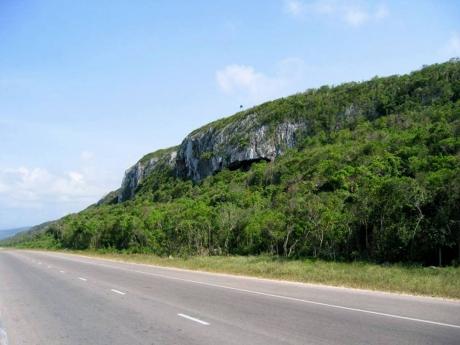Cedric Stephens | Some risks are best avoided
The Caribbean Tourism Organization (CTO) reported last week that it had developed a Multi-Hazard Risk Management Guide for the Caribbean’s tourism sector.
The plan was designed to “assist practitioners and policymakers to prepare for, and manage, multiple hazards that pose a risk to the industry”.
The CTO’s actions should be copied by other sectors – government and private. COVID-19 has highlighted the inter-connection between sectors. The development of plans – ex ante, not ex post – are important to achieve resilience and sustainability.
The absence of such plans was evident in the aftermath of recent weather systems that caused flooding. The resulting damage amounted to billions of dollars across the island even though the country was spared a direct hit during an unusually active hurricane season.
I have been following with great interest the controversy surrounding the Government’s decision, in the words of Ralston Nembhard, “to overrule” the National Environment & Planning Agency (NEPA) and allow for limestone mining in the Dry Harbour Mountains, near Rio Bueno.
While he understands the rationale for the Government’s decision, Dr Nembhard “strongly believes” that Jamaica has “more to lose than gain from allowing any mining in ‘them thar mountains’. Once you put a bulldozer in a forest, the first tree that is knocked over begins the degradation of that territory. After that, there is no telling what will happen next”.
Dr Nembhard’s comments can be interpreted to mean that he considers the risks associated with limestone mining as outweighing its economic benefits. Put another way: he believes that the choice is binary. Absent from his observations, however, is a detailed analysis of the specific risks that mining will create and a discussion of the effectiveness, or otherwise, of the mitigation strategies that the investors must implement to protect the “delicate ecological treasure”.
Unlike the CTO and the investors in the Caribbean’s tourist industry, he appears to think that the risks that will be created by the mining will pose threats to the ecology of the area that cannot be mitigated. As a result, mining must be avoided at all costs.
Abe Dabdoub, the attorney who represents the mining investors, provided useful information and valuable insights that helped me to better understand the issues. He furnished evidence that was published in an article in this newspaper on November 25 that he feels justified the granting of the permit. Unfortunately, the headline ‘Dry Harbour Mining Deal is All Legal’ did not do justice to the substance of his argument. The key points that he made were:
• The investor has spent 10 years in seeking to obtain a licence.
• The area in which the mining will be undertaken consists of 123 acres, out of 572 acres.
• The mining area was arrived at by NEPA after consultation with ‘relevant stakeholders’.
• A vegetation survey of the proposed site revealed an endemism – an ecological state of a species being native to a single defined geographical location – percentage of the proposed site of approximately 10 per cent. This is below the approximately 30 per cent national endemism average.
• The area will be conserved as outlined in the permit that NEPA granted.
• Of the eight government agencies that were involved in the application review process, only the Forestry Department objected. All the other agencies gave their approval, some of them subject to compliance with certain conditions. The Forestry Department’s objections were reflected in the NEPA permit.
• The investors have agreed to comply with all risk-mitigation strategies imposed by the regulatory agencies.
Managing risks involves the identification, analysis, and response to risk factors that threaten business enterprises, organisations, industries, and individuals. Effective risk management means attempting to control, as much as possible, future outcomes by acting proactively than reactively. It offers the potential to reduce the possibility of a risk occurring and the potential impact.
This approach appears to be consistent with the goals of the CTO’s Multi-Hazard Risk Management Guide. The permit that was granted for the Dry Harbour mining deal seems to have followed the same ideas underlying the drafting of the CTO guide.
Notwithstanding my support of the decision-making process, government departments are notorious for formulating policies and standards and failing to take effective measures to enforce them. I would have been happier with the granting of the mining permit if the authorities had developed a Plan B if something unforeseen in Plan A was to occur.
A financial instrument or performance bond issued by a reputable institution triggered by an unusual COVID-19 type event would make environmentalists, and persons like me, sleep better at nights.
- Cedric E. Stephens provides independent information and advice about the management of risks and insurance. For free information or counsel, write to: aegis@flowja.com.

